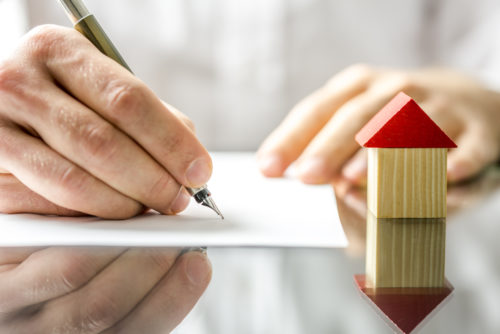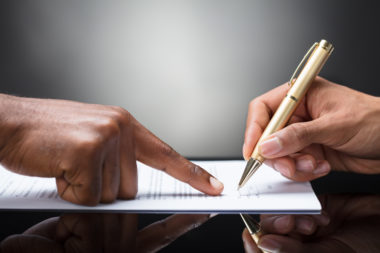Closing on a home is transferring a large property investment from one person or business to another; it is a sensitive process, and so involves a lot of paperwork. A large chunk of that paperwork is the financial documentation needed to transfer ownership of that property. Your mortgage loan, interest rate, and payment information are all important parts of your documentation when it comes to closing. One of these documents outlining your loan information is called a closing disclosure form. Before going through the closing process, it’s important to know what a closing disclosure is, what is on it, when you get it, and what to do if you have questions about it.
Table of Contents
What Is a Closing Disclosure?
A closing disclosure is a five-page form that outlines the final details of the mortgage loan to purchase your home. This form is important because it details all of your financial agreements in reference to your home and how much you will be paying, when you need to pay, and any extra costs or fees. Closing on a house involves a lot of paperwork, and the closing disclosure is one of the most important documents to be aware of.
What Is On a Mortgage Closing Disclosure Form?
There are a few key pieces of information on the closing disclosure, and you’ll want to review each of them before you start signing the rest of your closing paperwork:
- Type of mortgage: Your type of mortgage will include your fixed or adjustable rate status and the number of years it should last. This will be helpful to know if you decide to refinance down the road in order to change your interest.
- Amount you’re borrowing: It’s important to check this number to be sure it matches what you discussed with your lender.
- Monthly/overall payments: This will show your monthly mortgage payments as well as your overall payments.
- Escrow arrangements: Check whether any escrow arrangements for any ongoing homeownership costs match what you expected.
- Closing costs: This will show an itemized list all of your closing costs from appraisals to inspections and if it’s been paid.
- What you need for closing: This will show the amount of money you need to bring to your closing. Remember it needs to be a cashier’s check or a certified check, not a personal check.
When Do You Get a Disclosure Statement?
Your lender is required to provide you with your closing disclosure at least three business days before you close on your mortgage. These three days are there for you to go through the form, be sure everything is correct, and ask any questions before the closing date. Compare this form with the statement you received from your lender and don’t be afraid to ask about any discrepancies.
This is your last chance to challenge any errors without derailing the purchase of your home. Granted, your estimate is exactly that: an estimation of cost. So some numbers may not be exact matches. But, again, any big jumps or even little ones should be easily explained if you ask.
What If There Are Errors or I Have Questions About My Closing Disclosure Form?
Finding possible errors or having questions about your closing disclosure form is okay. It’s why you get your form early. If you have questions, talk to your lender or mortgage broker. There should be contact names, numbers, and emails on page five. Also, your real estate agent can help you get contact information as well. Your attorney (if you are using one) may be able to take up the issue on your behalf.
The most important thing to remember here is timeliness. Any errors have to be fixed before closing, which is only three days away from the first time you set eyes on your closing disclosure. Even if you’re packing and getting ready to move, don’t put off questions or corrections. There are many things that can prolong the closing timeline and you don’t want to derail the process at the eleventh hour by waiting to discuss corrections.
Your closing disclosure is the form telling you about your mortgage information, interest rate, and closing costs. It’s the form that lays out all the financial information you need to understand your loan and what it’s costing you, both upfront and over the life of the loan. By knowing what to expect and when to expect it, you can catch any questions or errors before your closing date.
Image Source: https://depositphotos.com/





